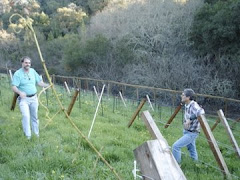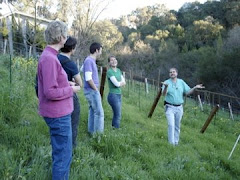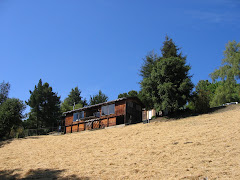 Hi all:
Hi all: Hey, one last thing in all these "starts & stops" of our wine making process. How do you get oak flavor from a glass carboy container during aging, you ask? Well, as I mentioned many, many posts ago (my second actually), Professor Singleton of the University of California - Davis had devised the use of wood oak cubes, while fermenting wine in large stainless tanks to get the flavor of the "Tannins" that one gets from aging in oak barrels.
By the way, that word tannin comes from the Old High German tanna for tree, you know like... "O' Tannenbaum, o' tannenbaum, how lovely are your branches..."! And there are several kinds of oak that have distinctive flavors. Our American grown oak barrels help impart that wonderful vanilla flavor you get in many of our California Chardonnays.
Well, during the malolactic process, it is suggested to add oak cubes when using a container that is not made of oak. Not only does it give you the oak flavor, but it offers the malolactic bacteria a place to hide. You can buy a package of little oak cubes (1/2"x 3/4"x 1") as you can see in my picture above. They have even calculated the total surface of a cube versus the one inside surface of an oak barrel, so yo know how much to use.
So things will be chuggin' along until Christmas, when we will do our second racking. Enjoy the approaching holiday season!
From down in the wine cellar,
John

































































































































